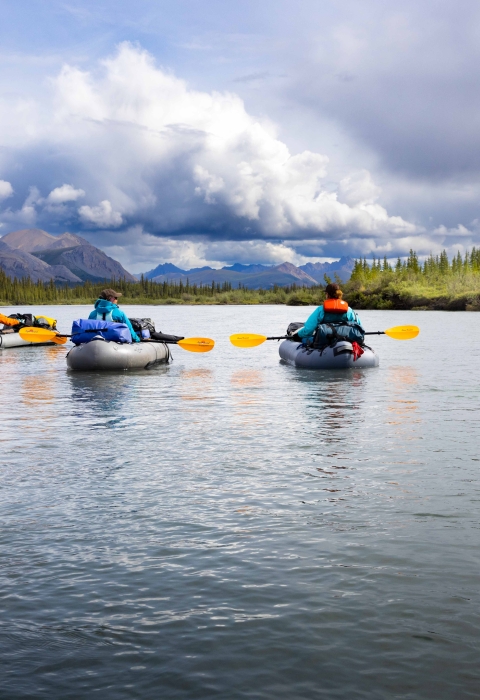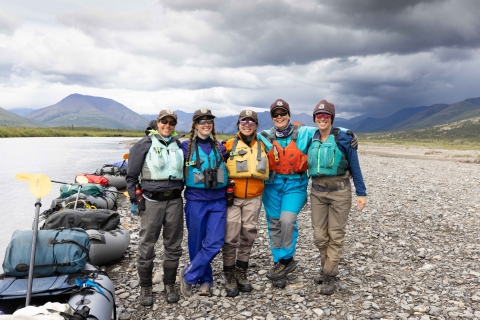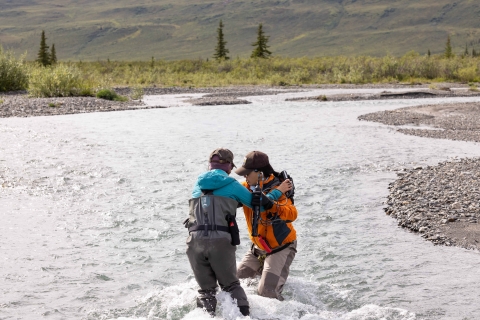The Wind Wild and Scenic River runs south out of the Brooks Range of arctic Alaska, entirely within the boundary of Arctic National Wildlife Refuge. It was designated by Congress for its outstandingly remarkable values and classified as “wild.” The river is an important corridor for both wildlife and people, but due to its remote nature, Service staff have rarely been able to survey for basic information and evaluate it for management needs.
In July of 2022, a team of U.S. Fish and Wildlife Service employees embarked on a ten-day, self-supported backcountry expedition to survey approximately half of the river’s 140 miles, collecting the first water quality samples in several decades and documenting features for management under the Wild and Scenic Rivers Wild and Scenic Rivers
The Wild and Scenic Rivers Act of 1968 established the National Wild and Scenic Rivers System, and authorizes Congress to preserve certain rivers with outstanding natural, cultural and recreational values in a free-flowing condition for the enjoyment of present and future generations. The act is notable for safeguarding the special character of these rivers, while also recognizing the potential for their appropriate use and development. The act encourages river management that crosses political boundaries and promotes public participation in developing goals for river protection.
Learn more about Wild and Scenic Rivers Act.
By chance, the team happened to be entirely composed of women. This Women’s History Month, the members of the group reflected on the mentorship that occurred and the supportive learning environment created by the women in the face of challenging conditions. “It was a great learning opportunity for me,” noted Maria Berkeland, who served as the trip co-lead, logistics planner, and scientific lead for water quality sampling and bat surveys.
Heather Bartlett, Arctic Refuge acting deputy manager and trip leader reflected on the group’s dynamic, “We had an amazing team of women out on the Wind River. Each of us brought a skillset and perspective that complemented the rest of the team, and we fell into a natural groove of recognizing how each of us could contribute individually to the collective success of the mission.”
“I gained a greater awareness about Arctic Refuge, outstandingly remarkable values of the Wind River, safety skills, and the value of working with others in a remote setting,” said Allyssa Morris, education specialist, who joined the expedition.
Jen Reed reflected on inspiration and mentorship working with women in conservation: “Over the course of my 30+ year career, I am thankful to have been mentored by innovating women in federal service for conservation. I’m thrilled that women now commonly lead actions affecting real improvements for our natural world. I’m also thrilled it didn’t even occur to our field team--until someone else pointed it out--that we happened to be five WOMEN heading into one of the most remote landscapes left on our planet, facing grueling physical conditions, to get the job we love done well.”
Join the expedition members on this virtual tour of the Wind Wild and Scenic River. See and hear what makes it outstandingly remarkable, learn about river stewardship and recreational guidelines. We hope you enjoy and find inspiration in this special place!




